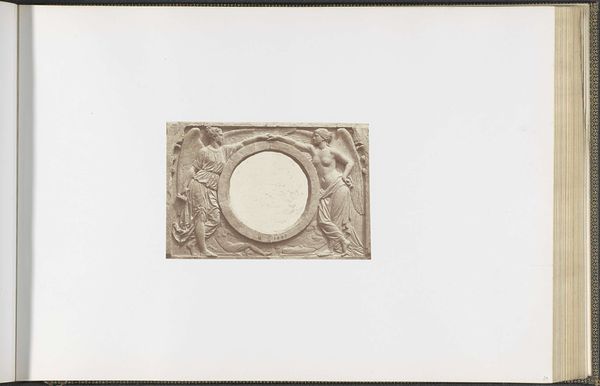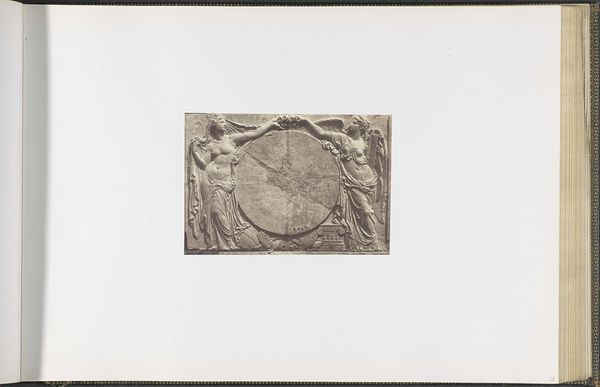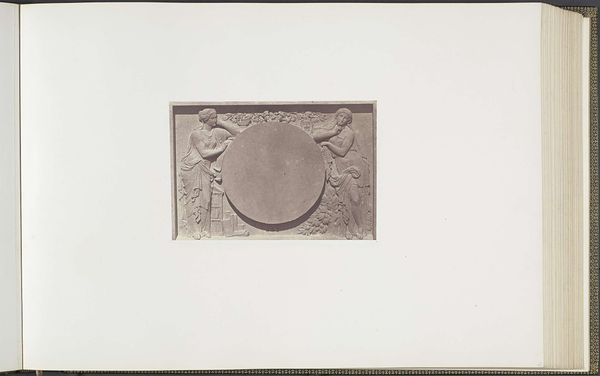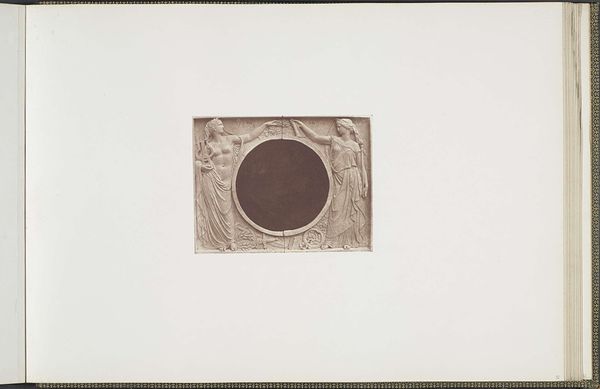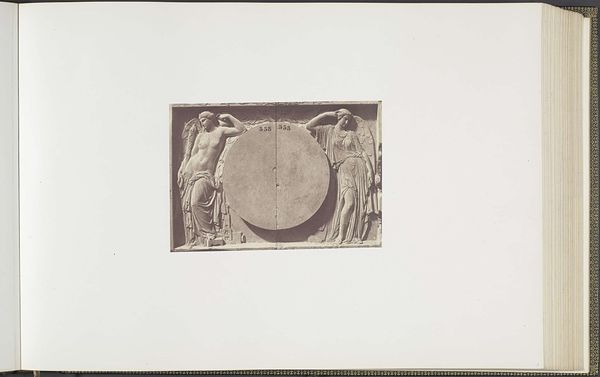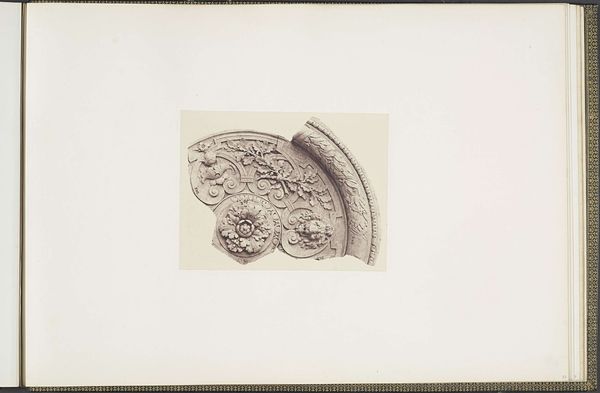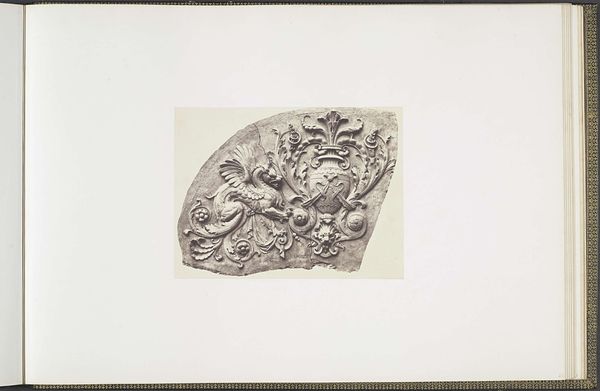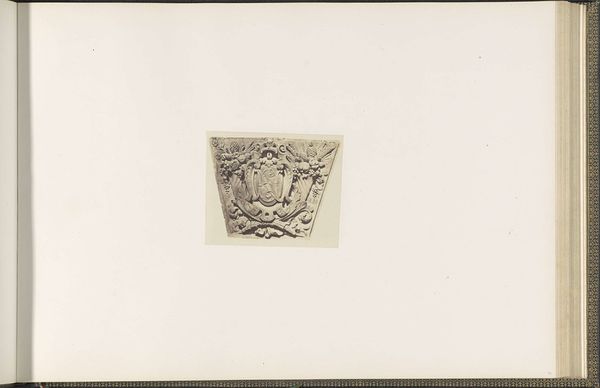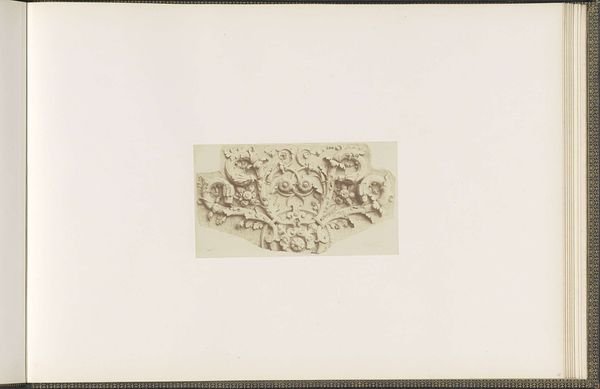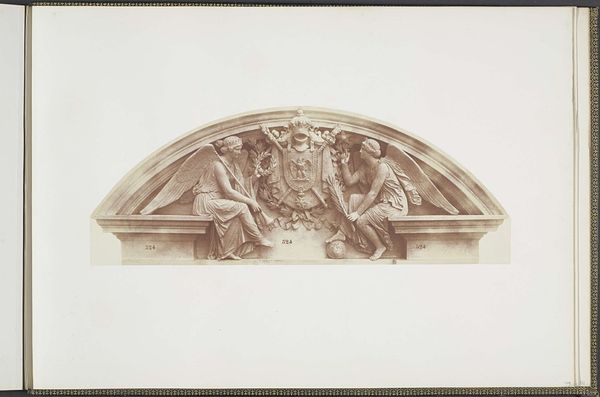
Gipsmodellen voor beeldhouwwerken op het Palais du Louvre: "La Navigation commerciale et la Mécanique" door Joseph Pollet c. 1855 - 1857
0:00
0:00
print, photography, sculpture, plaster, gelatin-silver-print
#
portrait
#
neoclacissism
#
allegory
# print
#
photography
#
geometric
#
classicism
#
sculpture
#
plaster
#
gelatin-silver-print
#
cityscape
#
history-painting
#
academic-art
Dimensions: height 378 mm, width 556 mm
Copyright: Rijks Museum: Open Domain
Editor: Here we have a photograph of plaster models for sculptures on the Palais du Louvre, titled "La Navigation Commerciale et la Mécanique" by Joseph Pollet, dating from around 1855 to 1857. The figures seem classical and rather stoic. What do you see in this piece that maybe I’m missing? Curator: It’s tempting to see a benign celebration of commerce and mechanics, right? But I wonder if we can dig a little deeper into the socio-political context. Mid-19th century France was undergoing massive industrialization and urban restructuring. How do you think these allegorical figures, meant to adorn a powerful institution like the Louvre, participated in shaping public opinion around these rapid changes? Editor: So you're saying that this image might be less of an innocent celebration and more of a carefully constructed…narrative? Perhaps idealizing and sanitizing some of the harsher realities of industrial progress? Curator: Exactly! Think about who is being represented here and who isn’t. Are there images of the working class, who were crucial to both "Navigation Commerciale" and "la Mécanique" and facing displacement? Consider the power dynamics at play: who controls the narrative, and whose stories are being told or, more importantly, erased? How might gender be operating within this allegory? Are we looking at passive or active female figures, and what do their roles signify? Editor: I see your point. I initially took the photo at face value, but considering it as a construction of power… I guess there's much more to unpack here. I need to read about the social impact of Haussmann’s renovation of Paris. Curator: Precisely! Art doesn't exist in a vacuum. By interrogating its historical and social context, we reveal its deeper complexities and its impact. What do you take away from this? Editor: This really highlighted the importance of context and questioning surface-level readings. I need to be a more critical viewer!
Comments
No comments
Be the first to comment and join the conversation on the ultimate creative platform.
